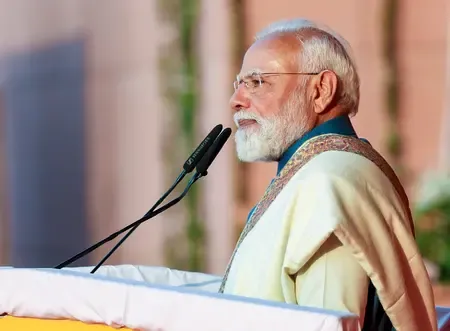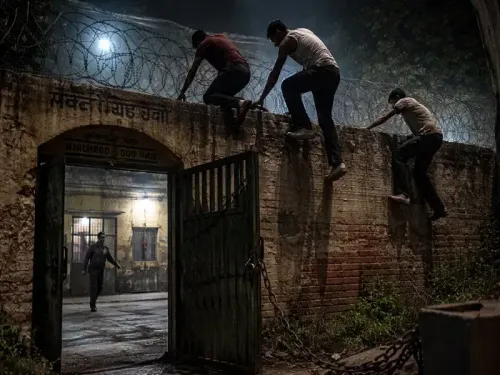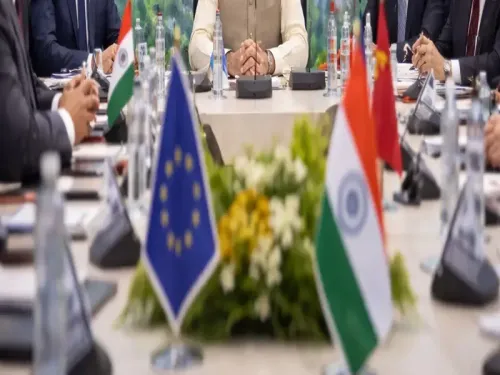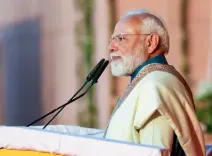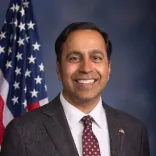How Are Armed Forces Leaders Addressing Joint Operational Planning?
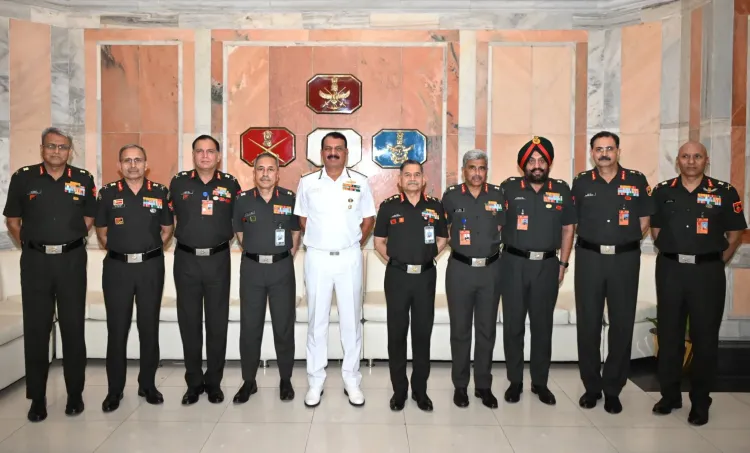
Synopsis
Key Takeaways
- Integrated military responses are essential in modern warfare.
- Joint operational planning is a key focus for India's armed forces.
- Tri-service collaboration enhances overall operational effectiveness.
- Ongoing reforms aim to establish joint commands for improved efficiency.
- Maritime-air synergy is central to India's strategic deterrence framework.
New Delhi, July 8 (NationPress) Highlighting the increasing necessity for integrated military responses in contemporary warfare, Chief of Naval Staff Admiral Dinesh K Tripathi, Chief of Air Staff Air Chief Marshal A P Singh, and Chief of the Army Staff General Upendra Dwivedi convened with senior officers from the armed forces on Tuesday. They reaffirmed their dedication to improving joint operational capabilities and fostering stronger tri-service synergy.
This high-level meeting, part of an ongoing effort to refine India’s joint warfare doctrines, centered on future battlefield scenarios, particularly in the maritime and aerospace sectors.
Taking to X, ADGPI noted, "The address concentrated on joint operational planning, emphasizing integrated maritime and air warfare in upcoming combat situations."
This vital discussion occurred against the backdrop of Operation Sindoor, where the Indian Air Force, leveraging credible intelligence, targeted nearly a dozen air force bases in Pakistan and approximately ten terror camps.
Last week, Deputy Chief of Army Staff Rahul R Singh remarked during an event in New Delhi, "A total of 21 targets were identified, out of which nine targets we deemed prudent to engage."
The operation was intentionally structured as a tri-services initiative, incorporating the Army, Air Force, and Navy to "convey the correct message that we are indeed an integrated force," he stated.
The senior army officer further emphasized that real-time target monitoring and the availability of credible intelligence were pivotal to the planning and execution of the assaults.
This drive for integration is in line with ongoing reforms by the Department of Military Affairs, aimed at achieving theaterisation and implementing joint commands for improved warfighting efficiency.
The engagement is also perceived as a step towards refining India’s Joint War Doctrine, with maritime-air synergy becoming increasingly central to the nation's strategic deterrence framework.


